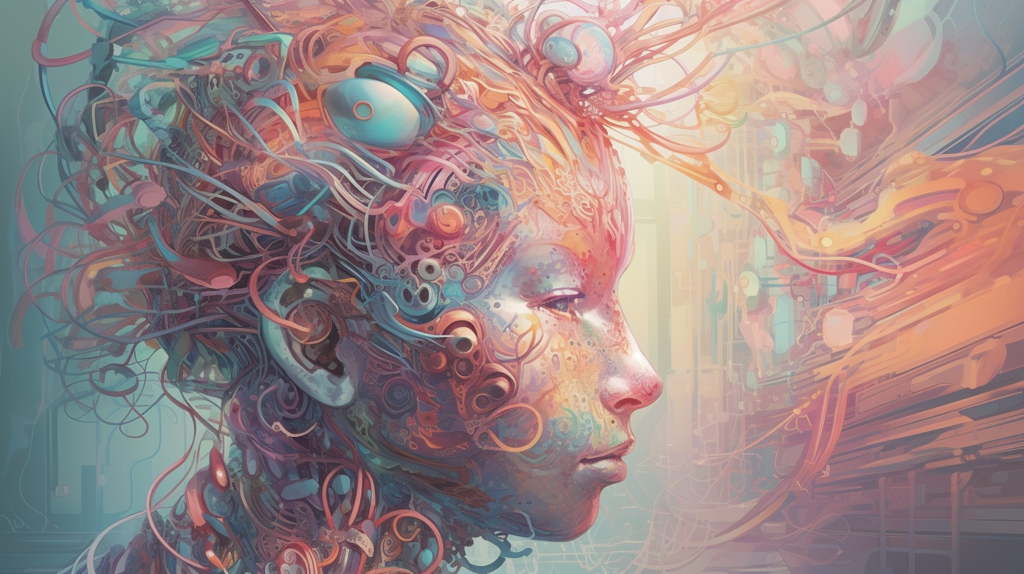Computers are ubiquitous, surrounding and infiltrating almost every aspect of our daily lives. Everything from our coffee makers to our smartphones operates on code. Yet our interactions with machines and programs remain to the largest extents bound to pre-defined routines or interfaces.
In today's increasingly digital society, to understand and actively shape how such systems might evolve and further influence our human existence, I have the strong conviction that students from an early age on should learn the fundamental principles of programming. Understanding how technology operates has in my eyes become as crucial as traditional skills like reading and writing. By learning programming, one gains deep insights into the paradigms the digital world surrounding us operates, and likewise develops skills in logical thinking and abstract problem-solving.
Amazingly this is easily possible, since it has never been as intuitive as today to gain access to free and native tools or programs such as the MIT-developed block-based visual programming language Scratch, to support such advancement. Regrettably, it's often the older generations – the parents, teachers and educators – who lack fundamental comprehension, leading them to overlook the significance of comprehensive digital literacy.
But now, today, as we potentially stand on the brink of the next step in (human) evolution, I find myself questioning whether being able to “speak” code will still be such a relevant future skill or whether much softer, more intuitive talents will prevail. Modern AI systems today predominantly rely on self-learning mechanisms, with their underlying programming structures being, for the most part, elusive to our understanding. Nevertheless, they excel in performance, surpassing traditionally designed software and tools in many aspects.
Thus, if AI can autonomously program in a manner beyond our human understanding, does learning to code retain its significance? Or maybe even more fundamentally, do we ever again need to comprehend the workings of a tool to effectively use it? Up until now, understanding how something works and especially why has allowed us to not only apply and use systems, tools or processes efficiently but also to reach and extend their limitations, thus constantly improving and evolving them. But now, that we have intelligent machines, that hypothetically will eventually have access to “all” information that is available, that can quantify, evaluate and discern good from bad and that have the ability to discover patterns and connections that due to their complexity remain invisible to human perception, do we ever have to understand anything again? Do we need to know how to drive a car if autonomous vehicles will do it much better than us? Do we need to distinguish music styles, artists or genres, if we are constantly fed with what we like? Do we have to learn and comprehend the rules of design, drawing, composition, color, ergonomics, etc. when artificial intelligence has access to all the rules, styles, and drawings in the world and is capable of judging their value?
But then what? If all the technical skills and abilities that often determine the quality of a result, all that can be learned through hard work and persistence, values we have been taught since our early childhoods, now disappears, what is there to remain? Will this finally allow for the true democratization of creativity, independent of social or cultural background, color, belief or gender and thus access to high-level education and software or tools, or will it result in the exact inverse, an ocean of mediocrity on a very high level?
The rapid advancement of artificial intelligence has left a lasting mark on every facet of our existence, its influence permeating and already deeply transforming industries such as healthcare, finance, mobility, retail, education, and entertainment. When exploring or using contemporary AI tools for creative design, such as image or video generators, what quickly becomes apparent is the utter importance of precision and detail when prompting for the desired outcome.
Current generative AI image tools can create impressive new content based on extensive datasets of images from the internet and their ability to “understand” the depicted and relate it to other domains. It is not too farfetched to assume that soon similar systems will be able to create 3D forms and models. Indeed, 3D information is not yet as accessible, vast and widely available as 2D data. However, the tools will evolve to become more intelligent, user-friendly and faster or big tech companies will step in, as Google has successfully proven with Google Books and Google Street View.
In this kind of speculative future, the creation of objects will evolve beyond traditional 3D CAD or design software, with materials, surfaces and textures no longer sourced from conventional means but instead being computer-generated. These materials, which the designer and pioneer in 3D printing Francis Bitonti describes as “materials that are continuously differentiating their properties” and “much closer to data than to how we think about analog materials today”, will seamlessly blend into one another, incorporating features like color, transparency, strength, and more. Such new materiality will drastically reform the realm of design, paving the path for a more fluid coalescence of objects, architecture and the environment. Sourced from organic substances, they will be much more natural, shifting from one state or property into another without blank joints or hard transitions, just as a tree transforms its structure, surface and appearance from trunk to branch to leaf, while retaining its primary materiality. Surfaces will exhibit various complementing properties that engage with our senses on various levels, and objects and geometries will respond to our behavior, relating to and informing each other thus eventually leading to a fluid, dynamic, vivid, maybe even a living architecture, as Philip Beesley imagines in many of his works and publications.
Eventually AI systems will leverage their speed and efficiency to emancipate us from laborious and mundane tasks and the still prevalent conception “that everybody has to be employed at some kind of drudgery because, according to Malthusian-Darwinian theory, he must justify his right to exist“, as R. Buckminster-Fuller already questioned in 1970. This liberation will not only afford us the opportunity to re-engage with the essence of being alive, which according to architect and visionary thinker Yona Friedman should mark the very core of any future society, but will also empower us to materialize any concept we conceive through a descriptive medium. Consequently, the meticulousness and clarity in articulating the desired outcome becomes supreme. This not only necessitates a high level of self-consciousness and awareness but also of creativity, imagination and most of all acute attention to detail.
A simple description like "the sweetest cat in the world" may be easily realized by any AI image generator into a heart-warming picture, but how many of us can articulate with accuracy the exact features of our long-lost childhood pet? Imagination, awareness, and perception thus become critical elements in this process, urging us to focus on the full spectrum of our human senses, understanding our connection to the environment and giving value to details, depth and intensity. As we usher into this new era, our interactions with both the world and AI hence may need to emphasize our sensory experiences. The ability to feel, touch, smell, hear, and see—and to convey these sensations with precision—may eclipse skills traditionally acquired through long and intense training. Such soft and intuitive skills will become primary for not only providing precise descriptions for AI systems to create meaningful and outstanding content but also to stress and strengthen the difference between humans and the artificial. In anticipation of this future, while understanding code will remain important, it might be even more crucial for us to reconnect with ourselves, our physical being, our body, and our tactile connection to the earth, nature and the environment.
An exciting opportunity thus lies ahead, one that emphasizes the necessity of understanding our essence as a human species, discerning our needs and desires, and articulating them effectively. As we now stand on the precipice of mastering the “art of dreaming”, the intrigue intensifies once our dreams unite—melding the visions of machines with our own; electric sheep. Just as creative AI sometimes produces 'hallucinations', generating outcomes beyond our grasp or comprehension, we must ponder its implications for the tangible realm. What materials or entities might AI envision? What intricate patterns, currently beyond our imagination, might it unearth? And how will these merge with our needs and desires and hence transform the reality we are used to?





